SUMMARY
This is AI generated summarization, which may have errors. For context, always refer to the full article.
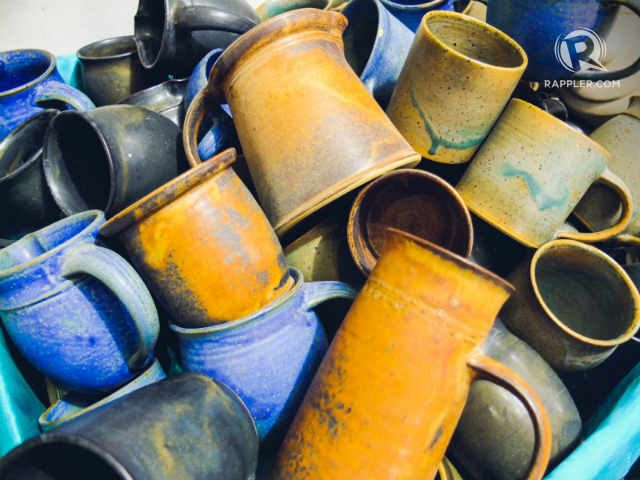
CAGAYAN DE ORO CITY, Philippines – Tucked along the coast of Barangay Bulua in the western part of this city is one of Cagayan de Oro’s best kept secrets.
Many tourists don’t know about it, but it’s the go-to place for many coffee shops, hotels, restaurants, spas, and companies looking for handmade mugs and cups, corporate giveaways, and collectible items.
Stoneware Pottery was formerly owned and run by Clemens Wirth, a master ceramic craftsman from Germany. He discovered that the earth pottery that Bulua is known for can be enhanced to world-class standards.
Stoneware Pottery, then known as Glema Stoneware Ceramic Craft Limited Company, was founded in 1994 by Wirth and Manolo Glema. Glema left the partnership in 2004 to start his own ceramic business, but it did not last because of his health condition.
Wirth ran the business with Germany-based Topferei Wirth but also left in 2014, handing over the pottery to Rhodora Abella, the company’s longtime corporate secretary.
Stoneware is now a purely Filipino owned company after Wirth offered Abella the opportunity to take the helm at a very “generous sale offer,” payable in terms that Abella did not disclose.
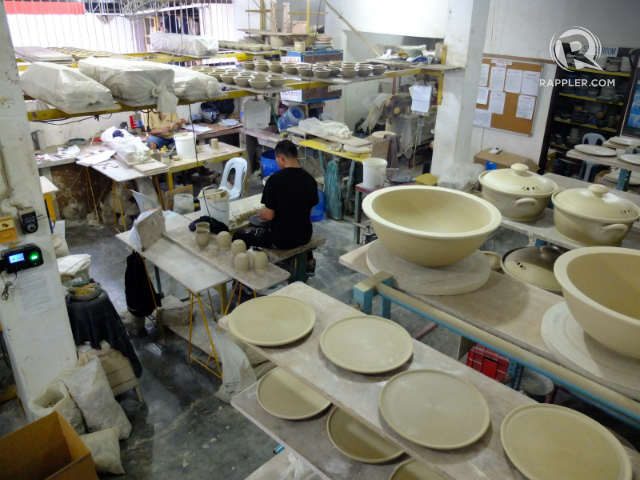
Abella says that what keeps them going are their passion for pottery and their dedication to the company.
Some of the workers have been with the company for almost 20 years, like Reynaldo Lomoljo. Others passed their skills to other family members like Fenie Glema, the younger brother of Manolo.
“It would have been hard for our 17 workers and potters if we close down the shop,” Abella says.
Art of ceramics
Abella explains that Stoneware pottery starts with imported white clay from Germany. “It is imported because clay from here and the one we use from Germany has a different characteristic,” she says.
The red earthen clay from Bulua – which is being used for brick making, plant pots, and garden decorative items – is not suitable for ceramics.
Abella adds that there are 3 types of clay being used today for pottery – stoneware, earthenware, and porcelain.
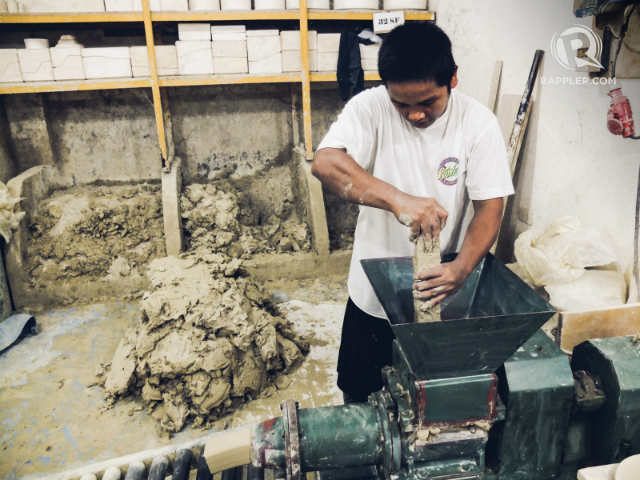
“What we are creating here is porcelain. It requires high ceramic skills and understanding of the qualities of the clay,” Abella says
She says that the process starts with pounding the blocks of clay “to remove all bubbles.”
Veteran employee Lomoljo says that if there are bubbles in the clay, these may cause air pockets inside the clay that would make it prone to breakage.
After the pounding, the clay is now ready for the molding.
Their product is dictated by the custom designs of their clients. Abella says their products include kitchen and dining ware, decorative items, and corporate giveaways.
After being molded, the ceramics are dipped in glaze and then fired at 1200 degrees Celsius in a gas kiln.
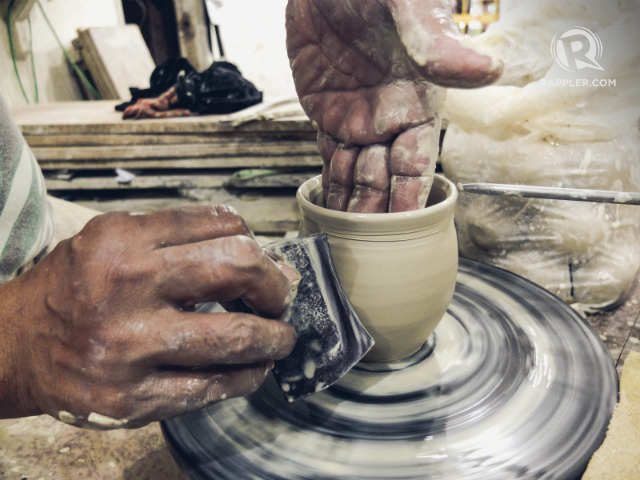
The glaze will add a coat and shine to the final product.
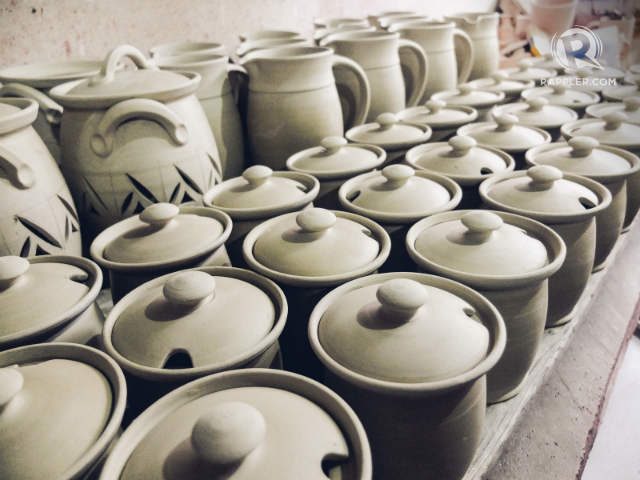
“All glaze are food safe and free of lead or other ingredients that might affect the health of our users,” Abella assures.
She adds that their products are oven proof, microwavable, and dishwasher proof.
The potter’s hand
In pottery, the potter’s hand molds the clay into a product that is unique, as much as it is functional.
Their clients may have different specifics for their designs, but since they are all handmade, each creation is different from the other.
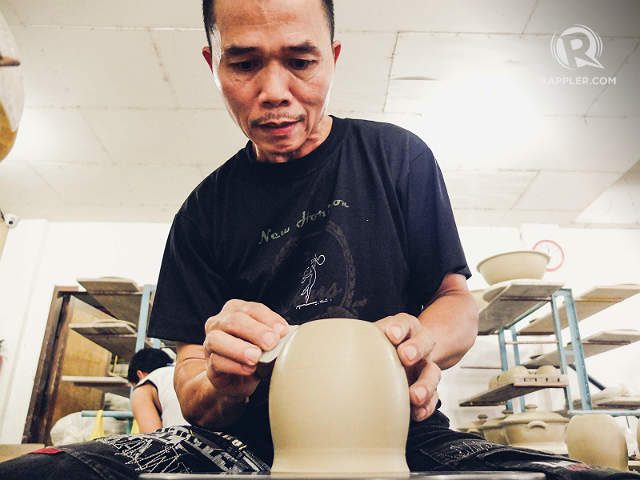
The potter’s skills in creating each handmade product is what clients are paying for. No two products are the same. And if the potter really likes his work, he will affix his signature to it.
“It’s a tedious process, from cutting the blocks of clay to the molding to the glazing and firing, but each time we see our final products, we are happy, knowing that these will be going places we cannot even dream of going,” says Camelo Palermo, who is now on his second year at the potter’s wheel.
Jhonie Abellanosa, also on his second year as a potter, says that he enjoys the creation process so much that he looks forward to the next day. “It’s a good, decent job,” Abellanosa says.
It may look quite easy watching the potters bent over clay, their eyes focused as the wheel spins and the clay starts to take shape. But in reality, it’s back-breaking work to create everything from scratch after the last one is finished.
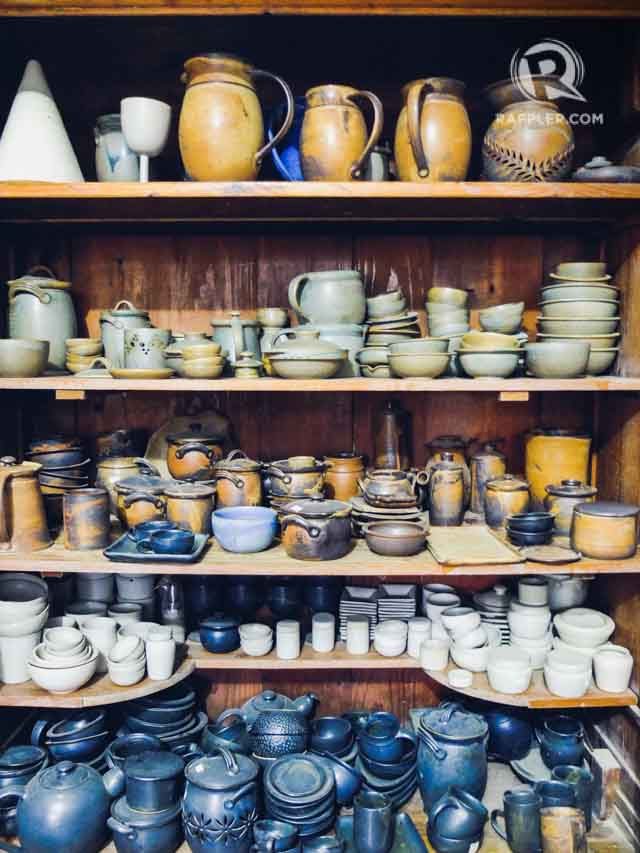
Abella says that tourists are sometimes allowed to participate in the creation process, “We sometimes allow them to feel the potter’s work, but it’s only for a short time. We have a time schedule to deliver,” Abella says
Stoneware Pottery produces two 20-foot containers filled with ceramics annually, bound for Germany, Hongkong, Singapore, Macao, Dubai, Japan, and the USA.
“We also cater to the local pottery market especially for coffee shops and restaurants,” she says.
Abella says that 60% of the company’s output is for export, while the rest is for the local market.
“Ceramics-making in the Philippine is quite limited. I think there are less than 10 companies that are operating here,” she says.
Tourists can buy their products too at their workshops in Bulua and in the road shows that the company participates in.
For now, Abella is focused on Stoneware’s survival. “I am not really for profit. This is a work of passion for pottery; this is for my co-workers,” she says. – Rappler.com
Add a comment
How does this make you feel?
There are no comments yet. Add your comment to start the conversation.